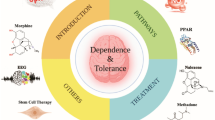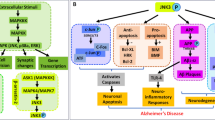Abstract
JZTX-V, an inhibitor of voltage-gated sodium and potassium channels, is derived from the venom of the spider Chilobrachys jingzhao in China. JZTX-V was synthesized using a solid-phase chemical approach with Fmoc-protected amino acids to explore its function further. The synthetic peptides were purified using reverse-phase high-performance liquid chromatography (RP-HPLC) and then subjected to oxidative refolding under optimal conditions. A unique peak was observed in the RP-HPLC chromatogram for refolded JZTX-V, and the ratio to native JZTX-V was 1:1 for the mixed samples. Subsequently, the analgesic potential of the synthetic peptide was evaluated in mouse models of pain. In the Formarin model, JZTX-V significantly reduced pain scores in 60 min and its efficacy was comparable to that of morphine. JZTX-V also exhibited excellent analgesic effects in models of postoperative pain and mechanical allodynia. However, JZTX-V had no effect on thermal stimulation injury in the hot plate experiment and did not affect motor coordination. These results indicate that JZTX-V effectively alleviates inflammatory pain in animals and provides a promising template for the design of future clinical analgesic drugs.





Similar content being viewed by others
Data Availability
No datasets were generated or analysed during the current study.
References
Binswanger IA, Shetterly SM, Xu S, Narwaney KJ, McClure DL, Rinehart DJ, Nguyen AP (2022) & J. M. J. J. N. O. Glanz Opioid Dose Trajectories and Associations With Mortality, Opioid Use Disorder, Continued Opioid Therapy, and Health Plan Disenrollment. 5, e2234671-e2234671
Cohen SP, Vase L, Hooten WMJTL (2021) Chronic pain: an update on burden, best practices, and new advances. 397, 2082–2097
Dehong X, Wenmei W, Siqin H, Peng Z, Xianchun W, Xiongzhi ZJC (2022) Effects of JZTX-V on the wild type Kv4. 3 expressed in HEK293T and molecular determinants in the voltage-sensing domains of Kv4. 3 interacting with JZTX-V. 16:72–83
Hwang S-M, Jo Y-Y, Cohen CF, Kim Y-H, Berta T (2022) & C.-K. J. I. J. o. M. S. Park Venom Peptide Toxins Targeting the Outer Pore Region of Transient Receptor Potential Vanilloid 1 in Pain: Implications for Analgesic Drug Development. 23, 5772
J. P. M. Freo U (2022) Paracetamol for multimodal analgesia. 12:737–750
King J, Emrick JJ, Kelly M, Herzig V, King GF, Medzihradszky KF, Julius DJC (2019) A cell-penetrating Scorpion Toxin enables Mode-Specific Modulation of TRPA1 and Pain - ScienceDirect. 178:1362–1374e16
Langenegger N, Nentwig W, Kuhn-Nentwig LJT (2019) Spider venom: components, modes of action, and novel strategies in Transcriptomic and proteomic analyses. 11:611
Laskin DM, Block SJ (1986) Diagnosis and treatment of myofacial pain-dysfunction (MPD) syndrome. 56, 75–84
Lne A, Azm BJP (2019) Inflammatory mediators of opioid tolerance: implications for dependency and addiction. 115:51–58
Lopes A, Menezes MS (2021) & G. B. J. B. J. o. Anesthesiology Chronic postoperative pain: ubiquitous and scarcely appraised – narrative review
Moyer BD, Murray JK, Joseph L, Kristin A, Philippe F, Jordan JB, Lee JH, Liu D, Long J, Kelvin SJPO (2018) Pharmacological characterization of potent and selective NaV1.7 inhibitors engineered from Chilobrachys Jingzhao tarantula venom peptide JzTx-V. 13, e0196791
Rosenberger DC, Blechschmidt V, Timmerman H, Wolff A (2020) & R.-D. J. J. o. N. T. Treede Challenges of neuropathic pain: focus on diabetic neuropathy. 127, 589–624
Saez NJ, Senff S, Jensen JE, Er SY (2010) & G. F. J. T. King Spider-Venom Peptides as Therapeutics. 2, 2851–2871
Shaheed CA, Beardsley J, Day RO (2022) Immunomodulatory effects of pharmaceutical opioids and antipyretic analgesics. & A. J. J. B. J. o. C. P. Mclachlan. Mechanisms and relevance to infection
Uramaru N, Shigematsu H, Toda A, Eyanagi R, Kitamura S, Ohta SJJ (2010) Design, synthesis, and pharmacological activity of nonallergenic pyrazolone-type antipyretic analgesics. 53, 8727-33
Varga Z, Tajti G, Panyi GJBF (2021) The Kv1.3 K + channel in the immune system and its precision pharmacology using peptide toxins. 72
Verkest C, Salinas M, Diochot S, Deval E, Lingueglia E, Baron AJT (2022) Mechanisms of action of the peptide toxins Targeting Human and Rodent Acid-sensing Ion channels and relevance to their in vivo Analgesic effects. 14:709
Woolf CJ (2010) J. T. J. o. c. i. What is this thing called pain? 120, 3742–3744
Yiya Z, Ji, Luo J, He (2019) Mingqiang, Rong, Xiongzhi & Z. J. F. i. pharmacology JZTX-V Targets the Voltage Sensor in Kv4.2 to Inhibit I < sub > to Potassium Channels in Cardiomyocytes
Yuan C, Yang S, Liao Z, Liang SJB, b. r. communications (2007) Effects and mechanism of Chinese tarantula toxins on the Kv2. 1 potassium channels. 352:799–804
Zeng X, Deng M, Lin Y, Yuan C, Pi J, Liang SJT (2007) Isolation and characterization of Jingzhaotoxin-V, a novel neurotoxin from the venom of the spider Chilobrachys Jingzhao. 49:388–399
Funding
National Innovation and Entrepreneurship Training Program (S202010548007).
Author information
Authors and Affiliations
Contributions
C.B. S.Z and Z.X wrote the main manuscript text, CB, S.Z, Z. Xprepared all figures. All authors reviewed the manuscript.
Corresponding author
Ethics declarations
Competing Interests
The authors declare no competing interests.
Additional information
Publisher’s Note
Springer Nature remains neutral with regard to jurisdictional claims in published maps and institutional affiliations.
Rights and permissions
Springer Nature or its licensor (e.g. a society or other partner) holds exclusive rights to this article under a publishing agreement with the author(s) or other rightsholder(s); author self-archiving of the accepted manuscript version of this article is solely governed by the terms of such publishing agreement and applicable law.
About this article
Cite this article
Bo, C., Zhenghua, S. & Xiongzhi, Z. JZTX-V, a Sodium Channel Inhibitor, Exhibits Excellent Analgesic Effects in Mouse Models. Int J Pept Res Ther 30, 25 (2024). https://doi.org/10.1007/s10989-024-10603-z
Accepted:
Published:
DOI: https://doi.org/10.1007/s10989-024-10603-z




